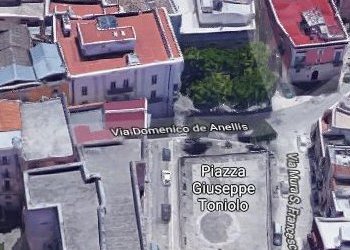Sacred buildings
HOLY BUILDINGS
In Andria Diocese
The primitive Andri (or Andre) originated from the fusion of some hamlets, Casalino, Grotte S.Andrea, S. Fortunato, S. Lorenzo, S. Onofrio, S. Ciriaco, the Borghello and very likely it also welcomed the inhabitants of farther hamlets in the premurgian area (Cicaglia, Trimoggia S. Lizio, Spineto, Calicchio, S. Lucia and others). Most of these rural areas formed actual villages provided with churches, as proved by the surviving rocky crypts in Adria: Santa Croce dei lagnoni, Santa Sofia (today Madonna of the Altomare), Sant’Angelo in Gurgo (today Santissimo Salvatore close to the sinkhole which hosted the large settlement of S. Maria of Trimoggia) and the cave of the Virgin Mary of Miracles located in the Lama of Santa Margherita. As Andri developed, streets and houses inside the city wall concentrated around the Romanesque cathedral built on top of an earlier church, which is improperly called crypt today. The construction of the churches of San Nicola and San Francesco (12th century), Sant' Agostino, Santa Maria of Porta Santa and Santa Chiara document the expansion of the new centre thoughout the following centuries. The churches of Santa Maria Vetere and of Santa Maria of the Carmine refer to the presence of large convent complexes outside the walls. The basilicas of the Virgin Mary of Miracles and of the Madonna of the Altomare (end of the 16th century) remind instead of the frescoes of the Virgin Mary discovered inside forgotten rocky churches.

DIOCESE'S CHURCH

Church of the Carmine
In 1681 Flavio de Excelsis, last descendant of a noble family of Andria, bequeathed his goods to the Carmelite fathers. His property included a hillock ...
READ MORE

Church of Porta Santa
The name of this church refers to its location on the site where a gate within the city wall of Andria used to stand. This gate is called “porta santa” (holy gate) ...
READ MORE

Church of Madonna of Miracles
The church owes its name to the discovery of an image of the Madonna with Child in her lap (datable to the 13th century according to the most accredited ...
READ MORE

Church of Sant'Agostino
The church of S. Agostino, dedicated to S. Leonardo during the period in which it was property of the Teutonic Knights (1230-1358), is famous for the ...
READ MORE

Church of San Domenico
The history of this church originally goes hand in hand with the history of the powerful family Del Balzo. The Dominican church and convent were established ...
READ MORE

Church of San Francesco
The church of San Francesco was originally included in the convent founded by the friars of the Order of St. Francis. The church, whose construction probably ...
READ MORE

Church of San Nicola
It's one of the oldest churches in Andria. According to tradition, the story of its foundation is tied to that of the hamlet of Trimoggia (one of those rural ...
READ MORE

Church Santa Maria Vetere
The date of the foundation of this monumental complex is still uncertain. The church was built outside the curtain wall of Andria, not far from the gate ....
READ MORE

Madonna of the Altomare
Located at the bottom of the convent complex of the Carmine, in an area which was originally placed outside the walls of Andria, the sanctuary of the ...
READ MORE

Cathedral
The cathedral of Andria is dedicated to Santa Maria Assunta and to San Riccardo, patron of the city. Over time it has undergone cycles of reconstruction ....
READ MORE

Church of Santa Croce
The church of Santa Croce is located in a part of the city called "Lagnoni", characterised by tuffacious stones in which large natural cavities are opened by ...
READ MORE
Address: via De Anellis n. 48, angolo piazza Toniolo 5, 6, 7, 8.
Phone: +39 0883593382
Email: museodiocesano@diocesiandria.org
Andria diocese's web address



